#Seven Stars in Kyushu
Text
Train fact: NAMED TRAINS!
So you've probably heard of the Flying Scotsman. Big green thing, turned 100 this year, probably the most famous locomotive in the UK, if not the world. Adapted into Thomas the Tank Engine with a whole lot of charisma and eyebrows. But did you know that name wasn't hers originally?
'The Flying Scotsman' is actually the name (formerly a nickname) of the train. The locomotive is Flying Scotsman's monster named for it. She was given the name in 1924, to help promote said service at the British Empire exhibition. Any engine, with any rack of coaches, or any train set, can be the Flying Scotsman.
Right now, it's run by LNER's new Azumas, which get a special little outfit about it:


Most of the named trains in the UK were phased out with steam (although you can still catch the Sheffield continental from Sheffield to St. Pancras, or the Northern Lights from King's Cross to Aberdeen, among a handfull of others) but they live on elsewhere.
Some are luxury touring trains, like Japan's Seven Stars in Kyushu (left) or South Africa's Blue Train (right).


Transport isn't really the goal here. They sell out months in advance and cost anywhere from hundreds to thousands of dollars, depending on the class of ticket you get. They're an Experience, and a very cushy experience at that. Just look at their interiors!

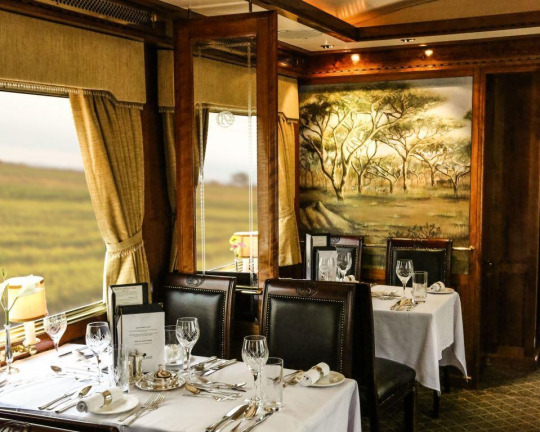
(yes, that's a piano)
But the vast majority of named trains in operation (as far as I can tell) are regularly-running exepress services across Asia.
Japan names their Shinkanens, India, Pakistan, Bengladesh & Sri Lanka often name their intercity expresses. These are practical, long-distance services, often named for monuments, like India's Ajanta Express, named for the Ajanta caves:

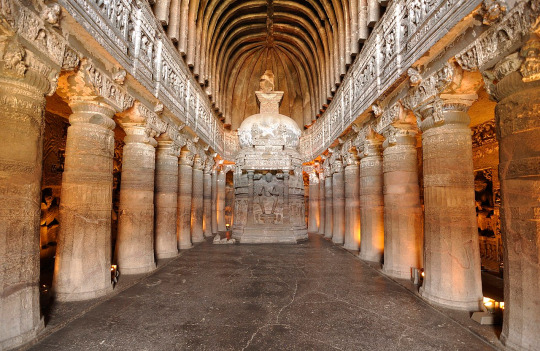
Or their operating regions, like Sri Lanka's උත්තර දේවී | Princess/Queen of the North:

Some North American countries also kept historic named routes, like Amtrak's Sunset Limited, or Canada's Ocean, which has operated continuously since 1904:

but my personal favorite named services are Australia's historically-nicknamed "The Fish", named after one of its drivers:

and the numerous trains that have been companion-nicknamed "The Chips" to match.
#Train facts!#ids in alt text#Sri Lanka Railways#LNER#modern LNER! Modern LNER! I know!#South Central Railway#Indian railways#NSW Train Link#via rail canada#the blue train#seven stars in kyushu#LNER Azuma
169 notes
·
View notes
Text
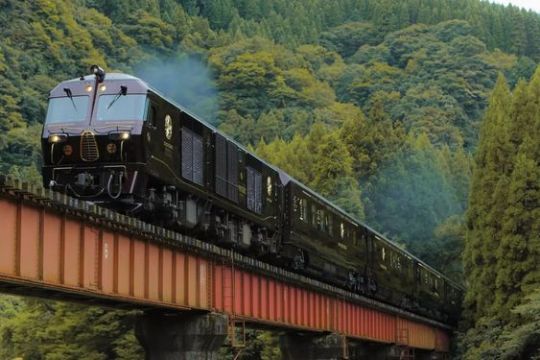
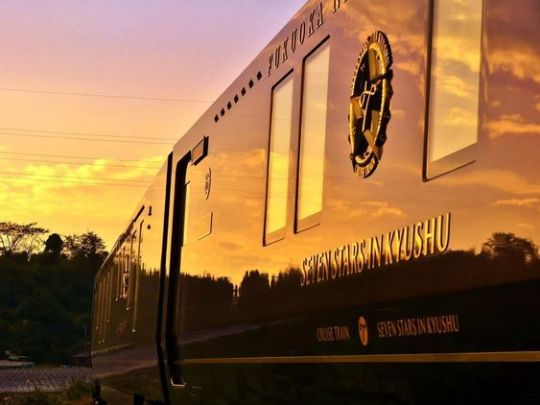


Αν υπάρχει μια εμπειρία με τρένο στον κόσμο που μοιάζει να μην έχει αντίπαλο παγκοσμίως, αυτή είναι μια διαδρομή στο ιαπωνικό νησί Kyushu.
Ενεργά ηφαίστεια, παραδεισένια onsen, περίτεχνοι ναοί, εργαστήρια που κρατούν ζωντανές τις αρχαίες ιαπωνικές τέχνες: Στο Kyushu, το νοτιότερο και τρίτο σε έκταση νησί της ��απωνίας, ταξιδεύουν όσοι αναζητούν αυθεντικές εμπειρίες. Τέτοιες εμπειρίες φιλοδοξεί να δώσει και στους επιβάτες του το τρένο Seven Stars in Kyushu, που κέρδισε για τρίτη συνεχόμενη χρονιά την πρώτη θέση στα 2023 Reader’s Choice Awards του Conde Nast Traveler, στην κατηγορία Best Train Trips in the World.
Oι λάτρεις των ταξιδιών με τρένο θεωρούν το πολυτελές Seven Stars ένα από τα πιο ευρύχωρα και άνετα στον κόσμο, επισημαίνει το αμερικανικό περιοδικό. «Κάθε ίντσα του τρένου -από τα κρεβάτια, τους νεροχύτες στα μπάνια και τις ξύλινες διακοσμήσεις μέχρι τα πορσελάνινα πιάτα στο δείπνο—είναι χειροποίητη, φτιαγμένη από Ιάπωνες τεχνίτες» σημειώνει το Conde Nast.
Η σιδηροδρομική εταιρία κλείνει φέτος δέκα χρόνια λειτουργίας, και η φιλοσοφία της παραμένει ίδια. Όπως σημειώνει ο πρόεδρος της εταιρίας, Yoji Furumiya: «Εξακολουθούμε να πιστεύουμε στην ενέργεια που δίνουν τα ταξίδια στη ζωή ενός ανθρώπου, στον πλούτο που φέρνουν καθώς και στους δεσμούς που γεννιούνται μεταξύ των ανθρώπων. Συνεχίζουμε να εξετάζουμε πώς μπορεί το Seven Stars in Κyushu να παίξει ρόλο σε όλα αυτά».
Τα επτά αστέρια στο όνομα του τρένου συμβολίζουν τους επτά νομούς του νησιού (Fukuoka, Saga, Nagasaki, Kumamoto, Oita, Kagoshima και Μiyazaki) και τα επτά επιβατικά βαγόνια του. Επίσης, εκφράζουν τα επτά χαρίσματα του τόπου: τη φύση, το φαγητό, τις ιαματικές πηγές, τους ανθρώπους, την ιστορία και τον πολιτισμό, τα τρένα και τις τοποθεσίες με ιερή ή πνευματική σημασία, τα “power spots” όπως ονομάζονται στην γιαπωνέζικη κουλτούρα.
Το χρυσό έμβλημα με το αστέρι ξεχωρίζει πάνω στα βαγόνια που είναι βαμμένα στο χρώμα του κόκκινου κρασιού- μια απόχρωση που παραπέμπει στην αρχαία λάκα. Από τον vintage σχεδιασμό του τρένου ως τις στολές του προσωπικού, όλα επαναφέρουν μια αίσθηση της χρυσής εποχής του ταξιδιού.
Οι επιβάτες χαλαρώνουν στο lounge του πρώτου βαγονιού με ζωντανό πιάνο χαζεύοντας τα αστέρια από το πανοραμικό παράθυρο, πίνουν τσάι στο tea room που είναι διαμορφωμένο σε στυλ ryurei (δηλαδή η τελετουργία του τσαγιού γίνεται σε καθίσματα και όχι στο πάτωμα) και απολαμβάνουν ένα ποτήρι Tsunuki, το ξεχωριστό ιαπωνικό single malt, στο μπαρ του τρίτου βαγονιού.
Σε κάθε ταξίδι του, το Seven Stars φιλοξενεί μόλις 20 επιβάτες καθώς διαθέτει δέκα σουίτες. Είναι όλες ευρύχωρες και πολυτελείς, με ντεκόρ που αποτελεί ένα fusion Ιαπωνίας – Δύσης, αλλά η πιο περιζήτητη είναι η Deluxe Suite A στην άκρη του έβδομου βαγονιού, για το πανοραμικό παράθυρό της.
Πίσω από την σαγηνευτική ατμόσφαιρα του εσωτερικού χώρου του τρένου βρίσκεται μια ομάδα από καταξιωμένους και έμπειρους τεχνίτες: Ο Μasato Kinoshita είναι ένας παθιασμένος δεξιοτέχνης του kumiko, της παραδοσιακής ιαπωνικής τεχνικής ξυλουργικής όπου μικρά, λεπτά κομμάτια ξύλου συναρμολογούνται με το χέρι ώστε να δημιουργήσουν περίτεχνα ξυλόγλυπτα σχέδια.
H πόλη Arita στα βορειοδυτικά του νησιού φημίζεται για την πορσελάνη της και τα πολύτιμα σερβίτσια με τα λεπτεπίλεπτα σχέδια που χρησιμοποιούνται στο τρένο προέρχονται από το εργαστήριό Kakiemon της οικογένειας Sakaida που συνεχίζει μια κληρονομιά 370 ετών.
Όσο για τα πανέμορφα κεραμικά, έχουν την υπογραφή του εργαστηρίου αγγειοπλαστικής Seiroku, του οποίου ο ιδρυτής Seiroku Nakamura ήταν γνωστός ως “o Θεός του Τροχού της Κεραμικής”.
Tα διήμερα και τετραήμερα ταξίδια του Seven Stars είναι σχεδιασμένα έτσι ώστε να «βυθίζουν» τον ταξιδιώτη στην πλούσια φύση και την παραδοσιακή κουλτούρα του Κyushu, περιλαμβάνοντας επισκέψεις στα πιο ξακουστά εργαστήρια, διαλογισμό σε ναούς, αξέχαστα παραδοσιακά δείπνα kaiseki.
Οι επιβάτες έχουν να θυμούνται πολλά: Τον ήχο του kara usu, του παραδοσιακού νερόμυλου που χρησιμοποιείται στην αγγειοπλαστική στο χωριό Οnta, που συγκαταλέγεται ανάμεσα στα «100 ηχητικά τοπία της Ιαπωνίας». Τα εργαστήρια geta, για την κατασκευή της παραδοσιακής ξύλινης σαγιονάρας που οργανώνονται μέσα στο τρένο.
To μαγευτικό υπαίθριο μπάνιο στα λαξευμένα στο βράχο λουτρά του ξενώνα Gajoen, στους λόφους της Kιρισίμα. Τη θέα στο επιβλητικό ηφαίστειο Σακουρατζίμα από τα παράθυρα του βαγονιού. Τους καλλιτέχνες της αρχαίας τέχνης bonzeki που φτιάχνουν τοπία μινιατούρες σε μαύρους δίσκους με άμμο και βότσαλα. Την παρατήρηση άστρων ξαπλωμένοι στο ζεστό έδαφος του γεωθερμικού πάρκου Unzen Jigoku.
Μια μοναδική συλλογή τοπίων και εμπειριών, σε ένα αυθεντικό κομμάτι της Ιαπωνίας, που κοστίζει περίπου 1.900 ευρώ για το διήμερο ταξίδι κατά άτομο και 3.800 ευρώ για το τετραήμερο.
Daily inspiration. Discover more photos at Just for Books…?
11 notes
·
View notes
Note
Hey there :D I was just curious what your favorite pokemon was.
Mines Sylveon
And also your favorite train.
Mine is the seven stars in Kyushu
https://www.cruisetrain-sevenstars.jp/english/train/
I used it for inspiration for a much later part in H.H.P.E. One day I hope I'll have enough to afford something so luxurious XD
Trains are amazing :/ but dear god they're so expensive.
Hi there.
My favorite Pokemon is Jirachi.
And I actually have a lot of favorite trains, many of which are streamliners, but one of said streamliners is the streamliner; the City of San Francisco, which was jointly operated by the Chicago & Northwestern, Union Pacific and Southern Pacific.
10 notes
·
View notes
Text
Seven Stars in Kyushu
Rating:
Explicit
Archive Warning: No Archive Warnings Apply
Category: M/M
Fandom: 新日本プロレス | New Japan Pro-Wrestling
Relationship: Narita Ren/Umino Shota
Characters: Ren Narita, shota umino
Additional Tags: Public Sex, way too much knowledge about a particular train ride, Blowjobs, roughstyle, Alcohol, it's mostly just a mention of wine at dinner, Food, set between g1 and destruction tour
Language: English
Words: 2,865
Read here
9 notes
·
View notes
Note
Ayato! How's the fancy train search coming? Find anything? Booked anything yet?? ৻( •̀ ᗜ •́ ৻)

"Heh, not yet, but I am thinking in the future here... One idea I have involves the Orient Express... but I'm debating either next anniversary or next Christmas." This Christmas was at the family estate, after all, and he wouldn't dare keep Souji from Asami's grandchildren.
"Oh, and then there's a birthday trip to Kyushu as well... Ann and Sue invited us on a trip so we're taking a trip on the Seven Star, just... don't tell Souji yet he'll be cross." After all, there's a lot of money involved in both trips.
#Anonymous#I wanna beg him not to take up the one car suite#but it's Ayato#so I have no chance#Ayato 'it's only money' Ishikawa everyone#npc: Ishikawa Ayato
2 notes
·
View notes
Text
I did a bit of drawing so I might as well say my idea I want to draw
Yes it's modern. Its essentially shima and ishida on a trip in a luxury sleeper train in Kyushu (called the seven stars of kyushu and when I saw a video about it I immediately thought that this is perfect, I thought of the sunrise before) as first date and all I can think is the 2 in their suite with one earbud on one of the 2s ears just listening to a playlist with their favourite songs. They sometimes mini argue about them skipping a song (usually on Yoshi's side)
4 notes
·
View notes
Text
[ad_1]
luxury train rides :
Travelling by train can be one of the most luxurious ways to uncover a country’s beauty. Whilst some luxury train journeys promise stunning scenery or gourmet cuisine, each offers their own unique charm – the world at a leisurely pace.
This inspired the experts at Japan Rail Pass to analyse the most popular and talked-about luxury train rides across the globeto uncover the best. They did this by looking into a range of factors including Tripadvisor reviews, Instagram hashtags and global search volumes – their total was then weighted to create an index score.
Top 10 best luxury train rides across the globe
Train
Location
Tripadvisor Average Review Score
Instagram Hashtags
Global Average Monthly Search Vols
Index Score (/10)
1
Rocky Mountaineer
Vancouver, Canada
4.5
54,029
368,000
8.92
2
GoldenPass Express
Montreux, Switzerland
4.4
15,786
18,100
8.39
3
The Ghan
Adelaide, Australia
4.4
12,571
22,200
8.35
4
Rovos Rail
Pretoria, South Africa
4.4
12,146
33,100
8.31
4
Seven Stars in Kyushu
Kyushu, Japan
4.4
49,219
3,600
8.31
6
The Blue Train
Pretoria, South Africa
4.2
41,654
6,600
8.29
7
Venice Simplon Orient Express
London, England
4.4
8,731
33,100
8.13
8
British Pullman
London, England
4.4
5,222
5,400
7.77
8
The Royal Scotsman
Edinburgh, Scotland
4.3
3,910
8,100
7.77
10
Maharajas’ Express
New Delhi, India
4.3
2,282
90,500
7.72
1. Rocky Mountaineer: Vancouver, Canada
Rocky Mountaineer situated in Vancouver, Canada ranks as the world’s best luxury train journey, scoring 8.92 out of 10. This luxury scenic train runs on four rail routes in British Columbia, Alberta, Colorado, and Utah. The luxury train has an average Tripadvisor score of 4.5 out of five, 54k in Instagram hashtags and is being searched for online368,000 a month on average – interestingly, these search volumes are 1,933% higher than second place and 1,558% higher than third place.
2. GoldenPass Express: Montreux, Switzerland
In second is the GoldenPass Express, scoring 8.39 out of ten. Located in Switzerland, the GoldenPass Express takes passengers from the resort town of Montreux to Interlaken in the Bernese Oberland. It’s a three-hour ride with four departures a day (in both directions). This experience has an average Tripadvisor review of 4.4 out of five, 15.6k tagged hashtags on Instagram and 18,100 online searches per month on average.
3. The Ghan: Adelaide, Australia
Scoring 8.35 out of ten and placing third is Australia’s The Ghan – a service that operates between the northern and southern coasts, through the cities of Adelaide, Alice Springs and Darwin on the Adelaide–Darwin rail corridor. This luxury ride has scored an average of 4.4 in Tripadvisor reviews, 12.5k tags on Instagram and over 22,200 average monthly searches.
4. Rovos Rail: Pretoria, South Africa & Seven Stars: Kyushu, Japan
Injoint fourth Rovos Rail in South Africa and Seven Stars in Japan – both scoring 8.31/10 in the study. The Rovos Rail is a railway journey that explores the south of Africa, and is said to be one of the most luxurious train journeys in the world. Known as Japan’s answer to the Orient Express, the Seven Stars Kyushu runs east from Fukuoka to Oita Prefecture over the course of three nights and four days. Both luxury trains scored an average of 4.4 on Tripadvisor and 12k in Insta hashtags.
2
!function(f,b,e,v,n,t,s)
if(f.fbq)return;n=f.fbq=function()n.callMethod?
n.callMethod.apply(n,arguments):n.queue.push(arguments);
if(!f._fbq)f._fbq=n;n.push=n;n.loaded=!0;n.version='2.0';
n.queue=[];t=b.createElement(e);t.async=!0;
t.src=v;s=b.getElementsByTagName(e)[0];
s.parentNode.insertBefore(t,s)(window, document,'script',
'https://connect.facebook.net/en_US/fbevents.js');
fbq('init', '459419996904776');
fbq('track', 'PageView');
window.onload = function()
!function(f,b,e,v,n,t,s)
if(f.fbq)return;n=f.fbq=function()n.callMethod?
n.callMethod.apply(n,arguments):n.queue.push(arguments);
if(!f._fbq)f._fbq=n;n.push=n;n.loaded=!0;n.version='2.0';
n.queue=[];t=b.createElement(e);t.async=!0;
t.src=v;s=b.getElementsByTagName(e)[0];
s.parentNode.insertBefore(t,s)(window,document,'script',
'https://connect.facebook.net/en_US/fbevents.js');
fbq('init', '774468656270267');
fbq('track', 'PageView');
;
window.onload = function()
(function(d, s, id)
var js, fjs = d.getElementsByTagName(s)[0];
if (d.getElementById(id)) return;
js = d.createElement(s); js.id = id;
js.src="https://connect.facebook.net/en_GB/sdk.js#xfbml=1&version=v2.12&appId=167606760703883&autoLogAppEvents=1";
fjs.parentNode.insertBefore(js, fjs);
(document, 'script', 'facebook-jssdk'));
;
[ad_2]
Source link
0 notes
Video
youtube
日本の最高峰・豪華寝台列車「ななつ星」に乗ってみた/クルーズトレインSEVEN STARS IN KYUSHU /動く極上の日本宮殿を目の当たり...
0 notes
Text
youtube
Often considered the most luxurious train in the world, the Cruise Train Seven Stars blends "old-school" luxury with a state-of-the-art rail network. It also claims its status as the first luxury sleeper train since its first departure in 2013.
During the 2 or 4 day tour around the island of Kyushu, the passengers of the Seven Stars wake up between the seaside and the mountains…
But be warned: booking this kind of trip is as simple as a contactless payment! Only 28 passengers can take place on board the train and the demand is so strong that the suitors must register for a lottery!
The lucky winners are then invited to buy their place for the next trip…
source : https://www.demotivateur.fr/voyage/les-balades-en-train-les-plus-luxueuses-du-monde-14977
0 notes
Text
Anime Recommendations
Here is a list of ten anime (in no particular order) that are definitely worth watching, yet don’t seem to get nearly as much recognition as they deserve.
Terror in Resonance (2014)
This is my personal favorite anime and I push people to watch it whenever I can, which is exactly what I’m doing here.
This show is set-in present-day Tokyo, which has been decimated by a terrorist attack, and the only hint to the identities of the culprits is a bizarre video uploaded on the internet. For the majority of the show the plot follows two different narratives: those of the investigators tasked with bringing down the terrorists, and of the terrorists themselves.
My Rating: 10/10
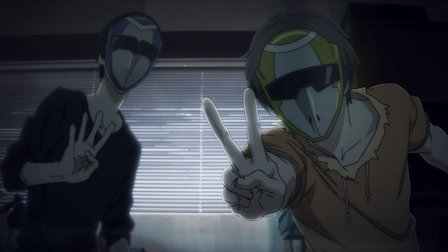
Toilet-Bound Hanako-Kun (2020)
This anime is probably one of my favorites, if not my number one, in terms of art style. I love everything about the character designs and the colors used. It is just so soothing to look at.
The famous "Seven Wonders" that every school seems to have are a staple of Japanese urban legends. One of the most well-known of these tales is that of Hanako-san:
Rumors claim that if one successfully manages to summon Hanako-san, the ghost of a young girl who haunts the school's bathrooms, she will grant her summoner any wish. When Nene Yashiro, a girl hoping for romantic fortune, dares to summon Hanako-san, she discovers that the rumored "girl" is actually a boy!
After a series of unfortunate events involving Nene's romantic desires, she is unwillingly entangled in the world of the supernatural, becoming Hanako-kun's assistant. Soon, she finds out about Hanako-kun's lesser-known duty: maintaining the fragile balance between mortals and apparitions.
My Rating: 8/10
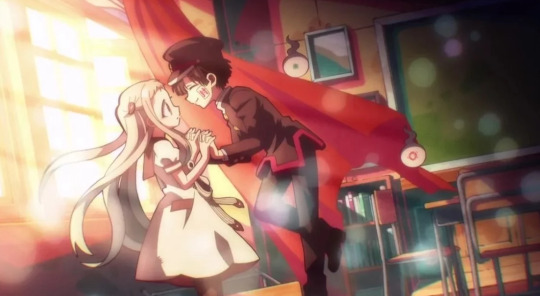
Kids on the Slope (2012)
If you love jazz, or history, or even heartwarming tales of friendship then this is the show for you. I will admit that is has a bit of a slow start, but by the time you get to the end you’ll be wishing for more.
In 1966, introverted classical pianist and top student Kaoru Nishimi has just arrived in Kyushu for his first year of high school. Having constantly moved from place to place since his childhood, he abandons all hope of fitting in, preparing himself for another lonely, meaningless year. That is, until he encounters the notorious delinquent Sentarou Kawabuchi.
Sentarou's immeasurable love for jazz music inspires Kaoru to learn more about the genre, and as a result, he slowly starts to break out of his shell, making his very first friend. Kaoru begins playing the piano at after-school jazz sessions, located in the basement of fellow student Ritsuko Mukae's family-owned record shop. As he discovers the immense joy of using his musical talents to bring enjoyment to himself and others, Kaoru's summer might just crescendo into one that he will remember forever.
My Rating: 6/10
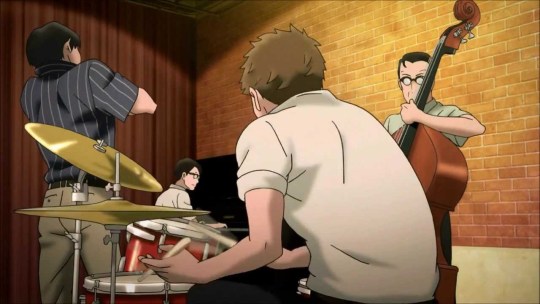
Hyouka (2012)
Energy-conservative high school student Houtarou Oreki ends up with more than he bargained for when he signs up for the Classics Club at his sister's behest—especially when he realizes how deep-rooted the club's history really is. Begrudgingly, Oreki is dragged into an investigation concerning the 45-year-old mystery that surrounds the club room.
Accompanied by his fellow club members, the knowledgeable Satoshi Fukube, the stern but benign Mayaka Ibara, and the ever-curious Eru Chitanda, Oreki must combat deadlines and lack of information with resourcefulness and hidden talent, in order to not only find the truth buried beneath the dust of works created years before them, but of other small side cases as well.
My Rating: 6/10
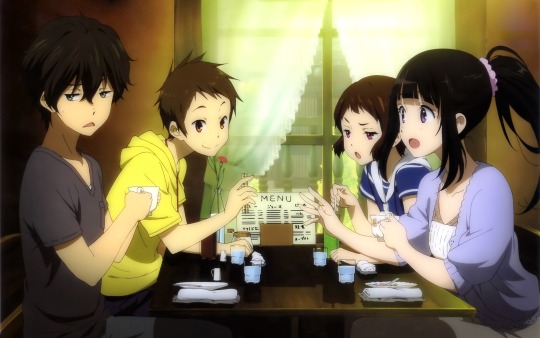
Tonari no Seki-Kun: The Master of Killing Time (2014)
I absolutely adore this show. The episodes are only about 8 minutes long, and there is very little talking, yet the story still comes through perfectly. It never fails to brighten my day when I’m feeling down.
All Rumi Yokoi wants to do is focus during school, but she is constantly distracted by Toshinari Seki, her neighboring classmate. Paying attention during class is the least of Seki's worries, as he obsesses over intricate setups created using an assortment of items, from an elaborate domino course on his desk to a treacherous war played out with shogi pieces. Yokoi desperately attempts to focus in class, only to be repeatedly sucked into his intriguing eccentricities; however, they always seem to end up with her getting in trouble with their teacher. Fortunately, lessons will never be dull with Seki's antics around!
My Rating: 9/10
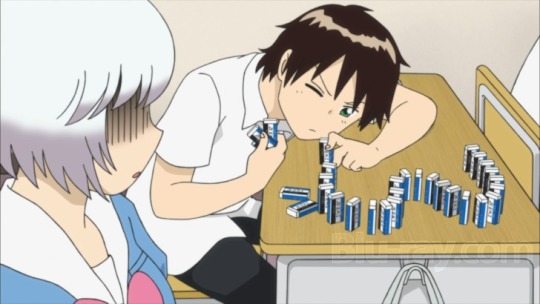
Classroom of the Elite (2017)
On the surface, Koudo Ikusei Senior High School is a utopia. The students enjoy an unparalleled amount of freedom, and it is ranked highly in Japan. However, the reality is less than ideal. Four classes, A through D, are ranked in order of merit, and only the top classes receive favorable treatment.
Kiyotaka Ayanokouji is a student of Class D, where the school dumps its worst. There he meets the unsociable Suzune Horikita, who believes she was placed in Class D by mistake and desires to climb all the way to Class A, and the seemingly amicable class idol Kikyou Kushida, whose aim is to make as many friends as possible.
While class membership is permanent, class rankings are not; students in lower ranked classes can rise in rankings if they score better than those in the top ones. Additionally, in Class D, there are no bars on what methods can be used to get ahead. In this cutthroat school, can they prevail against the odds and reach the top?
My Rating: 7/10
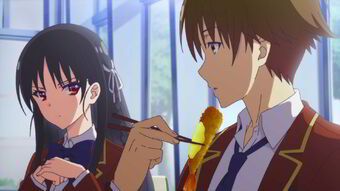
The Morose Mononokean (2016)
The start of Hanae Ashiya's high school career has not been easy—he has spent all of the first week in the infirmary, and his inexplicable condition is only getting worse. The cause of his torment is the mysterious fuzzy creature that has attached itself to him ever since he stumbled upon it the day before school began.
As his health continues to decline and the creature grows in size, Hanae comes across a flyer advertising an exorcist who expels youkai. Desperate and with nothing left to lose, he calls the number and is led to the Mononokean, a tea room which suddenly appears next to the infirmary. A morose-sounding man, Haruitsuki Abeno, reluctantly helps Hanae but demands payment afterward. Much to Hanae's dismay, he cannot afford the fee and must become an employee at the Mononokean to work off his debt. And to make things worse, his new boss is actually one of his classmates. If Hanae ever hopes to settle his debt, he must work together with Abeno to guide a variety of dangerous, strange, and interesting youkai back to the Underworld.
My Rating: 6/10
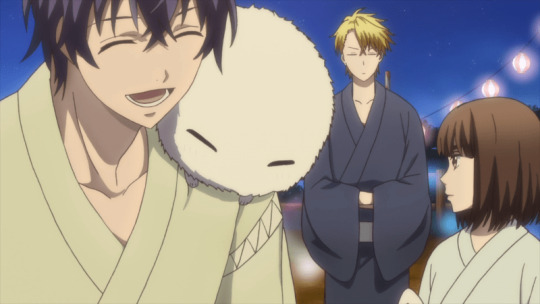
Beyond the Boundary (2013)
Another of my favorite aesthetically pleasing anime, this show has been the one that I show to friends who claim that anime cannot be beautiful (yes, several of my friends have actually said things along that line).
Mirai Kuriyama is the sole survivor of a clan of Spirit World warriors with the power to employ their blood as weapons. As such, Mirai is tasked with hunting down and killing "youmu"—creatures said to be the manifestation of negative human emotions. One day, while deep in thought on the school roof, Mirai comes across Akihito Kanbara, a rare half-breed of youmu in human form. In a panicked state, she plunges her blood saber into him only to realize that he's an immortal being. From then on, the two form an impromptu friendship that revolves around Mirai constantly trying to kill Akihito, in an effort to boost her own wavering confidence as a Spirit World warrior. Eventually, Akihito also manages to convince her to join the Literary Club, which houses two other powerful Spirit World warriors, Hiroomi and Mitsuki Nase.
As the group's bond strengthens, however, so does the tenacity of the youmu around them. Their misadventures will soon turn into a fight for survival as the inevitable release of the most powerful youmu, Beyond the Boundary, approaches.
My Rating: 7/10
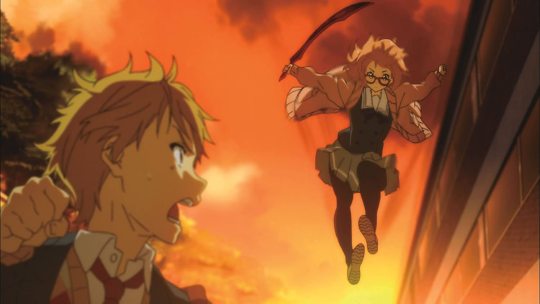
Mekakucity Actors (2014)
I think about this show far more than I’d like to admit. The way they bring different plot lines together continues to amaze me 6 years after watching it for the first time.
On the hot summer day of August 14, Shintarou Kisaragi is forced to leave his room for the first time in two years. While arguing with the cyber girl Ene who lives in his computer, Shintarou Kisaragi accidentally spills soda all over his keyboard. Though they try to find a replacement online, most stores are closed due to the Obon festival, leaving them with no other choice but to visit the local department store. Venturing outside makes Shintarou extremely anxious, but the thought of living without his computer is even worse. It's just his luck that on the day he finally goes out, he's caught in a terrifying hostage situation.
Luckily, a group of teenagers with mysterious eye powers, who call themselves the "Mekakushi Dan," assist Shintarou in resolving the situation. As a result, he is forced to join their group, along with Ene. Their abilities seem to be like pieces of a puzzle, connecting one another, and as each member's past is unveiled, the secret that ties them together is slowly brought to light.
My Rating: 8/10

Angels of Death (2018)
You totally want to get emotionally attached to cereal killers, right? Of course you do, that’s why you should totally watch this anime.
With dead and lifeless eyes, Rachel Gardner wishes only to die. Waking up in the basement of a building, she has no idea how or why she's there. She stumbles across a bandaged murderer named Zack, who is trying to escape. After promising to kill her as soon as he is free, Rachel and Zack set out to ascend through the building floor by floor until they escape.
However, as they progress upward, they meet more twisted people, and all of them seem familiar with Rachel. What is her connection to the building, and why was she placed in it? Facing a new boss on each floor, can Rachel and Zack both achieve their wishes?
My Rating: 7/10
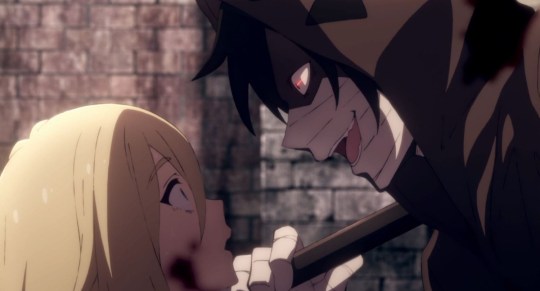
Bonus: Stars Align (2019)
I am adding one extra because this anime deserves so much more than it got. I adore every single character in this show and want nothing but to see them be happy. There is so much I adore about this show that I can’t put it all into words. I would recommend you watch this so you can share in my rage that the story was cut off halfway through with no current plans of completing it. There is no manga. There is no way of knowing what happens next. This recommendation is entirely for the purpose of generating more public outcry in the hopes that that causes them to finish the show. Please anime gods, if you are reading this I need to know what happens to my smol tennis boys. Are they safe? Are they alright?
Constantly outperformed by the girls' club, the boys' soft tennis club faces disbandment due to their poor skills and lack of positive results in matches. In desperate need of members,
Toma Shinjou is looking to recruit capable players, but he fails to scout anyone. Enter Maki Katsuragi, a new transfer student who demonstrates great reflexes when he catches a stray cat in his classroom, instantly capturing Toma's attention. With his interest piqued, Toma ambitiously asks Maki to join the boys' team but is quickly rejected, as Maki doesn't wish to join any clubs. Toma refuses to back down and ends up persuading Maki—only under the condition that Toma will pay him for his participation and cover other club expenses.
As Maki joins the team, his incredible form and quick learning allow him to immediately outshine the rest of the team. Although this gives rise to conflict among the boys, Maki challenges and pushes his fellow team members to not only keep up with his seemingly natural talent, but also drive them to devote themselves to the game they once neglected.
This story focuses on the potential of the boys' soft tennis club and their discovery of their own capability, while also enduring personal hardships and dealing with the darker side of growing up in middle school.
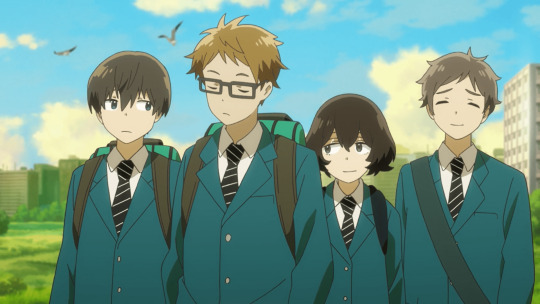
#anime#anime recommendation#zankyou no terror#terror in resonance#toilet bound hanako kun#kids on the slope#hyouka#tonari no seki kun#my neighbor seki#classroom of the elite#the morose mononokean#beyond the boundary#mekakucity actors#angels of death#stars align
80 notes
·
View notes
Text
鉄道寸景動画 ~ 行って来い、ななつ星
Train snap video ~ Go and come on, JR Kyushu D&S train ‘Seven Stars’.
2022.2.15、上り戸畑駅通過と下り門司駅通過のようすです。(3分23秒)
youtube
1 note
·
View note
Text
Back Into the Game
When the Yakuza Remastered Collection was announced, I let out a cry of joy. No longer would I have to find ways to track down the previous titles on the PlayStation 3 just so I could link up Kiryu Kazuma’s legacy across seven games. Now I had access to them all and could enjoy the franchise at my leisure. Everything was well with the world. And while I wanted to buy it as soon as Yakuza 3 Remastered came out, it was until Yakuza 4 that I purchased it on the PlayStation store. After a year that had me running from one brick and mortar store to another in the hope of obtaining a physical copy, I had learned my lesson. This time, I went digital. In saying that, most of the Yakuza games I’ve owned have been digital (barring Yakuza Kiwami 2) due to the fact that I only purchased Yakuza Zero after hearing good things about it from one Hollie Bennett of PlayStation Access fame.

After a roller coaster whirl that was Yakuza Kiwami 2, I was left a little bereft at the narrative of Yakuza 3. Though I knew that Kaoru would be written off, I was still disappointed at how quickly they sent her character packing off to the United States of America. Following from the events of Yakuza Kiwami 2, Kiryu retreats from the yakuza lifestyle and opens an orphanage in Okinawa called Morning Glory. Yet it is not long before he gets dragged right back in: first with the Ryudo Family when they threaten to take away his orphanage, and then again when the land deed is stolen by a man that looks a lot like his old mentor: Kazama Shintaro.
As such, the narrative in Yakuza 3 feels a lot weaker than the previous entries I’ve played, relying more heavily on nostalgia as well as a healthy dose of smoke and mirrors to carry the story. I was still able to get invested with a few of the new characters: such as the children at Morning Glory and Rikiya. In fact, Yakuza 3 actually kept most of the earlier chapters focused on looking after the gaggle of kids that Kiryu looked after. I liked the baseball game and the wrestling match, though they detracted a little from the serious nature of the primary plot about Black Monday and politicians vying to have their distinct bills passed through parliament. In saying that, though, Kiryu’s role in the whole debacle is as an outside agent of chaos. His only proper connection with the affair was that his orphanage was being threatened and that the patriarch of the Ryudo family and the Sixth Chairman of the Tojo Clan (Daigo) had been shot.
The ending also became a little predictable and considering the people introduced, it was easier to deduce who Andre Richardson of Black Monday was. Why they still wanted to have the military base bill go through when they knew it was trap to draw them out was a little confusing. I suppose, though, they proved to be an effective foreign menace.
I also liked how the different lieutenants juxtaposed each other, though the little there is said about Kanda, the better. Mine also proved much more complex and I would have preferred if he hadn’t been so self-sacrificing. I would have found it much more satisfying to see him atone for his actions rather than take the easy route out.

Yakuza 3 also saw the return of several of the more goofier substories. Many of them involved the new chase mechanic that had Kiryu tackling down dine and dashers, finding lost children and ensuring that the Kyushu No. 1 Star Ramen could live on in instant form. It also saw the resolution of the Akimoto-kun and Mizuki-chan saga. These two have seen their ups and downs, but it was a relief to see it end as they started their relationship over again.
After playing through Yakuza Kiwami 2, the first entry in the Remastered Collection was a clear step backwards mechanics wise. The graphics and the sound effects also saw a significant downgrade. Considering that these were not remakes but rather remasters, it is understandable and didn’t detract much from the game after I adjusted my sensibilities.
Instead of Cabaret Club, it was back to dating hostesses. Karaoke was less fluid, experience points were not divided into separate categories, only one piece of food could be bought and heat was gradually lost over time.
Yakuza 3 feels and plays like a game from a bygone age. Despite the blemishes, I very much enjoyed my time with it. What I am disappointed about, though, is that Kiryu has been stabbed so much in the stomach, it’s a miracle that no-one has actually ruptured his intestines. Yes, he has abs of steel but it seems nigh impossible that he has managed to live for so long. How has he not suffered a severe infection?
Still, if he died so soon then there wouldn’t have been Yakuza 4, 5, 6. And that would be a shame.


4 notes
·
View notes
Note
21, 24 for the fic writer asks!
21: Share your favorite piece of dialogue
“We should go on a weekend trip.” Shota kissed Ren’s cheek and left the statement hanging.
“Hmm”
“What did you have in mind? We still have a week off.” Ren smiled and turned his head to kiss Shota. Shota pulled out his phone and tilted the screen towards Ren.
“Well, I just got us tickets for Seven Stars in Kyushu. We have to get to Hakata for it, but that’s doable.”
Ren pursed his lips and grabbed his phone. Pulling up the website for the train company, his eyes widened at the price.
“Do you realize how much this will cost?”
Shota leaned in and kissed Ren’s cheek again.
“I know. I already paid for it.”
It's from the opening of the train fic!
24: What's something that surprised you while you were working on a fic? Did it change the story?
I answered this one, but Ren turning heel changed a current WIP to the point that I don't know how to approach it. I'm kind of waiting to see how things play out at WK before approaching it.
3 notes
·
View notes
Note
"Come on Sou-chan, or the train will leave without us" Laughing softly as she dragged the birthday boy down to the track. Not there was actually a chance of them leaving before they got there, she was excited
Happy Birthday Souji!
@petiteamores

He was quite ready to fuss at Ayato for such an extravagant trip... the Kyushu seven star?? How was this even possible?? Wasn't there a lottery?? How did he manage all of it?? But with Yua so excited, it was hard to be immune to her enthusiasm, instead laughing as he was dragged to the extravagant train.

He is prepared to be fussed at later, when they get their first moment alone, but at least for now he can watch his husband enjoy himself for a little while.
1 note
·
View note
Text
The Flowers of Jigokuraku
Disclaimer: this essay will refer to fairly recent chapters (53 and forward), so if you are a new reader, I advise you to catch up before you read it. And as usual, I am not Japanese nor Chinese, so my arguments and explanations are based on the research I made, but I won’t pretend I’m absolutely right on everything. My goal is merely to provide a comprehensive understanding of the references used in Jigokuraku, as well as a historical context to give the in-story points of view more perspective. English isn’t my native language as well, so I hope my explanations won’t be too wonky, grammatically speaking. On these words, I hope you’ll deem this essay an enjoyable or educative read. [Originaly posted here]
In this essay, we’ll study the cultural references used for the island and its inhabitants. We’ll see the reason why certain characters seem to have a rough knowledge of the island, providing a historical context that’ll help us understand why and how these legends are known both in-story and from a narrative perspective. The legends mentioned will be related to Xu Fu and the Immortals, since they are the basis for the mystical island in Jigokuraku.
I. Education during the Edo era
The Xianren, the Immortals, are brought up by both Senta and Toma on chapter 16. These characters have generally proved fairly educated and useful to provide insight to the reader through their discussions with other characters (GabiGang and Chôbe). However, one could wonder **why** apparently random characters like them would know about that sort of thing.
The Tokugawa period represents roughly 250 years of peace and stability throughout Japan and, despite the sakoku, the isolation of the country, it still received influences from Korea, China and Europe (via the Dutch traders). This general stability provided the perfect set up to develop Japanese culture as we know it, and to spread ideas through education. Indeed, education wasn’t solely reserved to the upper Samurai class, and many schools would open everywhere to provide at least a certain level of reading/writing/counting to young Japanese, and going as far as offering classes on Rangaku (Dutch studies), Kangaku (Chinese studies) or military strategy for the ones who could afford it.
Terakoya, temple schools opened for commoners, flourished during the Tokugawa era with a function similar to our current primary system. These schools developed with the blessing of the Shogunate, which would use them to promote Confucianism – the set of morals used as a basis for Japanese society during the Edo era. Such system would indeed provide all the knowledge necessary for the four main casts (Samurai, Peasants, Artisans and Merchants) to understand where they stood in the hierarchy and how much they could afford to learn as well. Furthermore, the daimyo, the feudal lords, would also create hankô, the schools of their domain (Han), to provide education to the children of their retainers. These *hankô* would follow the model of Shôheiko, the Confucian school administered by the Shogunate itself, in order to promote the study of Kangaku, Confucianism, history and even medicine.
Furthermore, knowledge could be more easily spread through time thanks to the development of woodblock printing. As such, even a commoner could have access to various texts and illustrations, which helped the general population learning about both historical facts and legends about both Japan and China. Sinophiles of this period would work to conciliate historical facts and legends and have them work together to integrate Chinese elements in Japan’s history without negating Japan’s own cultural and historical identity, while certain legends would see themselves modified and expanded according to both China’s and Japan’s cultural needs.
All in all, these facts about education and scholarly pursuits can easily explain why Senta and Toma would know about things such as the Immortals: it could have been part of what they studied before coming to the island, whether it was from a historical, philological or religious point of view. They would at least have a general knowledge of it because of the schooling they’d been provided when they were younger.
II. Xu Fu and the search for immortality
The story of the half-legend, half-historical figure Xu Fu starts in China, with his appearance in the Shiji (Records of the Grand Historian) by Sima Qian (145 – 90 BCE). The character quickly gained popularity and his story was expanded in later writings. These writings reached Japan during the Heian period (794 – 1186) and were further developed during the medieval period, yet their peak happened during the Edo era. As previously mentioned, Kanraku, the Chinese studies, became common under the Tokugawa thanks to the Confucian system imposed by the Shogunate. This in turn helped the study of Xu Fu and his quest to integrate it in Japanese history and culture, by notoriously adding that the quest for immortality led him to Japan – something never mentioned in the initial Chinese texts, but that appeared during the 10th century, thus potentially suggesting an influence between China and Heian Japan during that time. This notably led to three theories as to where Xu Fu and his party landed, and what Mount Penglai (where the Immortals are, known as Hôrai in Japanese) is exactly. The first two theories were made during the late Heian period, and situated Xu Fu’s landing near Mount Fuji or in Kumano (currently Mie Prefecture, near Nara). Without entering details (because it’d require a whole post just for Xu Fu), these theories became known during the Ming and Qing dynasties, as Japanese monks and scholars travelled to China and used the story of Xu Fu as a basis of Sino-Japanese friendship through cultural common grounds. The third theory appeared during the following Kamakura era (1185 – 1333), and located Xu Fu at Atsuta Shrine (Nagoya), with the shrine itself being Penglai/Hôrai. During the medieval period, these writings and theories were used as a basis to give Japan a proper position in Chinese culture, but the story really started gaining traction under the Tokugawa, thanks to the cultural exchange between Japan and China as well as the general intellectual development in Japan.
Historiography became widespread during Edo era, compiling and inventing stories became common to the point even Jesus and Moses had the story of their travel to Japan. Furthermore, these stories became popular with the many works of zuihitsu authors (miscellaneous writings), who used these stories to gain more readers. Edo historian Hayashi Razan even confirmed through his researched that Mount Fuji could indeed be Mount Penglai/Hôrai. According to the stories of that time, Xu Fu brought Chinese methods tied to textile, agriculture and medicine with him, sharing them with the inhabitants of the region and settling down there as well. Yet Kumano remained the most popular theory, leading to the creation of a shrine, Xu Fu’s tomb as well as the tombs of his seven retainers, Jofuku no miya (Xu Fu Palace), Mount Hôrai... These elements were used in numerous texts, travel records and poems, even famous ukiyo-e painter Hokusai drew Painting of Xu Fu Looking Up at Mount Fuji. The legend became larger as the theories about Xu Fu’s location varied and covered Japan (not counting Hokkaido), from Aomori to the North of Honshu to Kagoshima in Kyushu. All of these legends around Xu Fu were supported by the bakufu and the daimyo, who used them to promote the cultural importance of their Han and encourage tourism.
From an in-story perspective, we can see how and why some characters would be knowledgeable about certain things on the island, or at least recognise certain names, and even why the Shogun himself decided to take the search for immortality so seriously. From a narrative perspective, I commend UG for his twist on the location of Penglai/Hôrai, making it a mysterious man-made island south of the Ryukyu Kingdom (nowadays Okinawa) that fits the descriptions of a paradise... Only at a first glance. It gives the readers a refreshing take on a legend that has been told and modified for centuries to fit all sorts of narratives, and makes the story much creepier.
III. Xianren, the Immortals
Before talking about the Immortals and the material given by UG, we should see where the concept of immortals comes from, and how it evolved in time.
The concept itself comes from a religious movement called Fangxiandao, the Way of Mages and Immortals. This movement came to existence during the Springs and Autumns period (771 – 256 BCE), but fully developed during the Warring States period (771 - 256 BCE as well) and united scholars of various specialities (alchemy, divination, rituals, exorcism...) around rulers and aristocrats seeking physical immortality and under the belief that Immortals lived in the islands of the Yellow Sea and the East China Sea. Theories relating to Yin Yang and the Five Elements emerged during the Warring States period, and seemed to include the Yellow Emperor as well, since he was perceived as a Taoist Immortal (and is referred as one of the first Emperors in the previously mentioned Shiji). It is thanks to this movement that the concepts of the lands of Immortals (Penglai, Fangzhang and Yingzhou – nowadays Mount Kunlun) have been formulated and became the reason of many quests in search of these places. The most famous one is Xu Fu’s search for immortality, for which he’d been provided with a thousand of young boys and girls, and who never came back from his search. The Fangxiandao opened the way to Taoism under the Han dynasty, but the core concept of immortality and Immortals remained despite the religious shift. With Taoism, an Immortal becomes an incarnation of duality, mobile yet without form, residing among the stars and in the deepest caves and giving sacred texts to their most deserving apprentices only. I’m not going to explain the different types of alchemy and the rituals that lead to immortality, as this topic has already been explained by u/gamria and in the manga itself. However, I hope this explanation on what the Immortals are from a cultural point of view helps understand why certains characters in the manga would react to them as if they were somewhat aware of the general ideas about the Immortals and a character like Xu Fu. It is thanks to the use and expansion of Chinese legends that these elements became known from the Japanese population during the Edo era.
The most famous Immortals are the Eight Immortals, divine beings in Taoism popular both from a religious and literary perspective. The most famous pieces concerning them are The Eight Immortals Cross the Sea and The Immortals Celebrating the Anniversary of the Goddess. The first one relates the crossing of the sea to go to Penglai (or visit the goddess Xiwangmu), during which they renounce to take a boat and decide instead to show their magical skills by transforming their respective amulets into one. This action displeases the Dragon-King, who captures one of the Immortals, which leads to a battle. The situation is solved when Bodhisattva Guanyin reconciles both parties. The second one relates the Peach Festival, a feast of immortality organised by the goddess Xiwangmu, making the Eight Immortals a symbol of longevity and immortality. They are also the basis for a martial art imitating the movements of a drunk person, and based on a text during which the Immortals are drunk. Interestingly enough, counting Mei, we have eight Immortals drunk on Tan in Jigokuraku. And it’s still fine to remove Mei from the count, because it’ll make seven Immortals... Like the seven retainers of Xu Fu, according to the aforementioned writings that could be find during the Tokugawa period.
Now, concerning our Immortals, Rien and his friends, who have been tied to Xu Fu in chapter 53. I have noticed specific references concerning them, aside from Taoism: the flowers associated with them, which in my opinion have been purposefully chosen by UG for their cultural symbolism. I’m not going to make research on their official names though, since I don’t speak Japanese nor Chinese and would rather avoid misinformation caused by my own ignorance. If someone else feels like doing that, I’d certainly be glad to read it!
Rien: as it raises unstained from the mud, the lotus is commonly associated with purity and perfection. It is also one of the Eight Auspicious Symbols of Buddhism, a throne for Buddha, as well as the flower that grew under his feet when he walked. In China, it is one of the 4 major flowers, and it’s associated with Summer as well as He Xian-gu, one of the 8 Immortals.
Mu Dan: the peony has a major significance in China, both at a cultural and political level. It was the national flower during the Qing dynasty (1644 – 1911) and it is considered the King of Flowers, being associated with wealth, honour, aristocracy, love affection and feminine beauty.
Tao Fa: the peach blossom is associated with vitality and immortality, since it blooms before the leaves sprout. Peach wood was also believed to ward off evil spirits, and thus peach wood staves would be used for such purpose, especially to clear the way for the Emperor.
Ju Fa: the chrysanthemum is one of the Four Gentlemen in Chinese culture, along with plum blossom, orchid and bamboo. It is associated with Autumn and the 9th month of the year, as well as joy and long life.
Zhu Jin: the hibiscus is a popular flower associated with fame, riches, glory and splendour, given as a gift to both men and women.
Ran: the orchid is associated with love, beauty, wealth, fortune and unity. As such, it can also be used as a symbol for married couples. It is also associated with scholarly pursuit, nobility, integrity and friendship, as well as Confucius himself. It is a flower of Spring.
Gui Fa: the sweet osmanthus (cassia spice tree) is a flower traditionally praised by poets and associated with the Mid-Autumn festival in China. Osmanthus wine is seen as typical “family reunion” wine. Since it sounds similar to the word for “expensive, noble, valuable”, it is associated with these concepts. According to a legend, the moon has a cassia tree that produces a drug for immortality.
Mei: the plum blossom is both one of the Four Gentlemen and one of the Three Friends of Winter (with Pine and Bamboo). It is a symbol of longevity since, like peach blossom, the flowers bloom before the foliage sprouts. Its five petals are also associated with the Five Gods of Prosperity and the Five Good Fortunes.
As you can see, it looks like UG didn’t pick the flowers used to create Lord Tensen just because they were pretty. These flowers hold a notable cultural importance, and reflect well the high status of Lord Tensen on the island. It’s the botanical equivalent of screaming at the reader “*they are the boss of this place*”, if you will. Interestingly, these symbols are the part I started with for this essay, since in its first form I was seeking an answer to the self-asked question “are the flowers used for Lord Tensen significant one way or the other concerning the plot”, and decided to do some research based on the botanical, cultural and medicinal aspects of the flowers (cue the title of this essay, which I liked and kept because it’s still relevant)... But it was inconclusive on my end, and I’m not educated enough on these matters to dig them properly. Still, it was interesting to learn more about the cultural significance of these flowers and the potential reasons why they have been selected by UG for his characters.
To conclude, we can see through the research on certain references given by the characters in-story that there are two interesting layers: first, education during the Edo era, the interest for Chinese culture and its implementation in Japanese texts and how it is reflected via the comments and explanations provided by some characters. Second, the actual references used by the author, their origin and how they are implemented in the narration to construct a story that provides the reader with a new take on an ancient legend.
While I did my best to keep it short, it also means I didn’t go as in-depth as I could have, but I wanted to provide a general explanation on philology without going in too deep and ending up lost in my own thinking pattern. Still, it was very interesting to read about these elements, which provided a much clearer narrative frame for. I do hope you found it as entertaining or informative as I did!
Sources
Education in the Tokugawa era
Sinophiles and Sinophobes in Tokugawa Japan: Politics, Classicism, and Medicine During the Eighteenth Century
Wai-ming Ng, Imagining China in Tokugawa Japan: legends, classics and historical terms
Fangxiandao , Xian , Eight Immortals
Taoism in Japan
Chinese Symbols
Flowers and Fruits
22 notes
·
View notes


